2020-2021 Dynafit TLT Speedfit
Stated Flex: None Provided
Available Sizes: 22.5-30.5
Stated Last (size 26.5): 101 mm
Stated Range of Motion: 60°
Stated Forward Lean: 15-18° (adjustable)
Size Tested: 26.5
Stated Boot Sole Length (size 26.5): 287 mm
Blister’s Measured Weight (size 26.5):
- Shells, no Liners: 868 & 875 g
- Liners, no footbeds: 146 & 148 g
- Total Weight per Boot: 1014 & 1023 g
Buckles: 2 micro-adjustable aluminum
Powerstrap: 30 mm cam-style
Shell Material:
- Cuff: Grilamid w/ fiberglass reinforcements
- Shoe / Clog: Grilamid
Soles: fixed, rockered, full-rubber made by Pomoca
Binding Compatibility: pin-style “tech” bindings with pin heels
- (NOT compatible with Marker Kingpin, Fritschi Tecton, Salomon / Atomic / Armada Shift MNC 13, or any alpine bindings)
Tech Fittings: Dynafit Masterstep
MSRP: $599
Skis / Bindings Used:
- DPS Wailer A112, 184 cm / G3 Ion 12
- DPS Cassiar A95, 179 cm / Dynafit Speed Radical
Test Locations: Vista Hut, BC; Whitefish Mountain Resort Sidecountry, NW Montana Backcountry, & Glacier National Park, MT
Reviewer: 5’8”, 205 lbs
Days Tested: 35
[Note: Our review was conducted on the 18/19 TLT Speedfit boot, which returns unchanged for 19/20 and 20/21, except for new color options.]
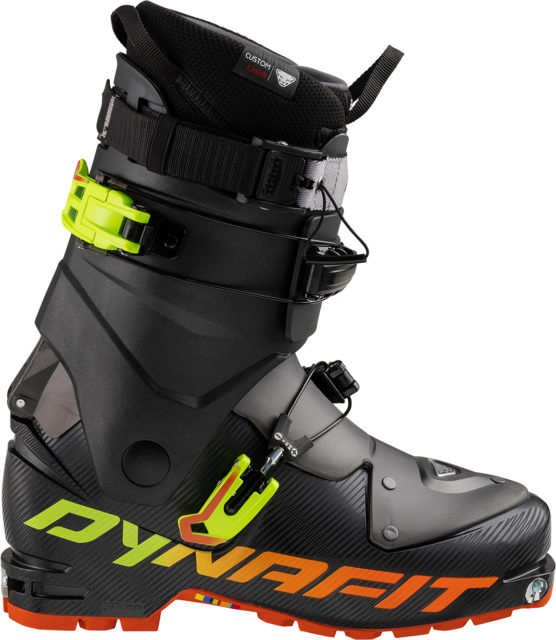
Intro
Last year, Dynafit introduced the TLT Speedfit boot, which they aim at the inbounds, fitness-touring market. The boot returns unchanged for 19/20, apart from new colors, and I’ve now spent about 35 days in this boot.
Though there are some changes, the TLT Speedfit is an obvious reincarnation of the old Dynafit TLT6 Mountain boot, and those of us who loved the TLT6 were wondering: how does the Speedfit fare as intended (inbounds fitness laps), and could it also handle general backcountry touring in varied conditions and terrain? Is this the return of a fan favorite, or something different?
Here’s my take:
Weight & Comparisons
The TLT Speedfit is a very light boot, even compared to other boots that are generally in the same category. Here are a few of our measured weights for some boots in the same category as the TLT Speedfit, and then one heavier, more downhill-oriented boot for reference. (All weights are in grams, and are taken with the boots’ footbeds, spoilers, and / or laces removed.)
988 & 991 Scarpa Alien RS, 28.0 (18/19–19/20)
1014 & 1023 Dynafit TLT Speedfit, 26.5 (18/19–19/20)
1064 & 1070 Fischer Travers Carbon, 27.5 (16/17–18/19)
1065 & 1069 Dynafit TLT 7 Performance, 28.5 (17/18–18/19)
1167 & 1170 Atomic Backland Carbon, 27.5 (15/16–18/19)
1232 & 1232 Salomon S/Lab X-Alp, 27.5 (17/18–19/20)
1288 & 1286 Arc’teryx Procline Carbon Support, 27.5 (16/17–19/20)
1406 & 1414 Atomic Hawx Ultra XTD 130, 26.5 (19/20)
Liner
Dynafit claims that the TLT Speedfit’s liner is light and offers superior insulation, even for nighttime laps at the resort. The TLT Speedfit’s liner is a bit less substantial than the liners in the old TLT6. The TLT Speedfit’s liner broke in quickly, and hasn’t had any fraying or durability issues over thirty-five days of use.
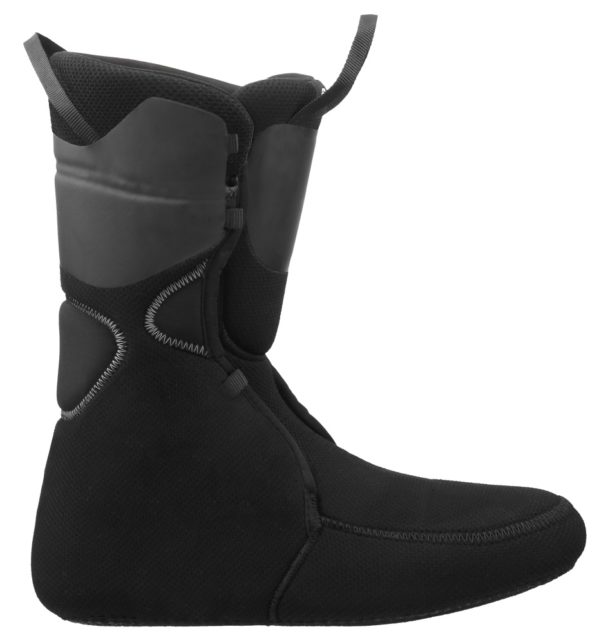
Regarding Dynafit’s claims about the warmth of the TLT Speedfit’s liner, I found it to be warmer than the liners in the 18/19 Atomic Backland Carbon, but not as warm as thicker, more substantial liners like those found in the Dynafit Hoji Pro Tour and the Scarpa Maestrale RS.
Walk Mechanism, Buckles, & Power Strap
A repeat in the refrain: the walk mechanism, buckles, and power strap on the TLT Speedfit are largely the same as those on the TLT6 Mountain. The TLT Speedfit features two buckles with cable-style attachments and a narrow, cam-style power strap. Its Ultralock 2.0 walk mechanism up top is simple, easy to set & use, and relies on external components to lock out the upper cuff. If you’re not familiar with the Ultralock system, it essentially consists of a metal latch that’s attached to the upper buckle. With the upper buckle closed, that latch secures the rear cuff to the shell of the boot for ski mode, and opening the buckle releases the shell and cuff and allows for lots of range of motion in walk mode.

If the ~200 days in the TLT6 are any guide, the Ultralock 2.0 mechanism will eventually get sloppy. And if you really wrench on the back of the boot like, say, landing backseat on a pillow drop, the pin on the end of the Ultralock 2.0 buckle that holds the boots cuff and shell together can pop you from ski mode to walk mode in a hurry. To be fair, hitting pillows is far outside of what Dynafit intends for the TLT Speedfit — as the rest of my touring group well understood as I tomahawked through some trees above them after the aforementioned pillow drop. It’s not a bad system — it just has limitations, particularly when used on a very light, minimal boot like the TLT Speedfit.
I do love that the TLT Speedfit’ power strap has a cam-style cinch; it keeps things tight and snug while skiing. The power strap is pretty important for the TLT Speedfit, since it elevates the profile of the boot on your shin. Leaning into the front of the Speedfit while skiing without the power strap means you’re pushing your shin only into the relatively narrow strip of plastic that is the front of the upper cuff. Save yourself that — use the power strap.
Soles
The sole on the TLT Speedfit is made by Pomoca, it’s fully rubber, it’s rockered, it’s black, and you can use it to walk on a variety of things without falling down. It gets most abraded in the front from scrambling on rocks, like all of the soles on my boots do, though using it for inbounds groomer laps would lead to less abrasion on the sole. I don’t feel that the TLT Speedfit’s sole is anything special but it isn’t wearing out prematurely, either. All that said, if you’re coming from alpine boots or boots with GripWalk / WTR soles, you’ll notice significantly better grip and walking comfort with the TLT Speedfit and its rockered, full-rubber sole.
Fit
As always, we highly recommend going to a reputable bootfitter to figure out which boot will work best for you. Fit is the most important aspect of ski boots, and everyone’s feet are different. No fancy features are going to make up for a poorly fitting boot, so start by figuring out which boot(s) fit your feet, and then go from there. With that said, here’s how the TLT Speedfit fits my feet.
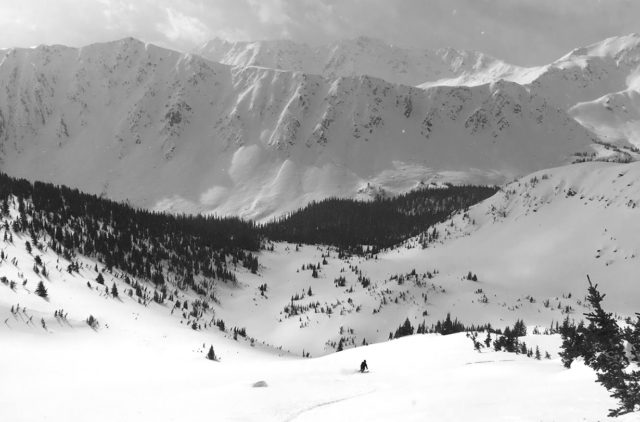
Those familiar with the last generation of the TLT6 (the black / orange version that came out during the 15/16 season) will find a basically identical fit in the TLT Speedfit. The forefoot is fairly roomy, even for my wider hobbit feet, with what I’d call a “medium / low” instep and a relatively wide heel pocket.
I wanted to get a sense of how the TLT Speedfit’s liner felt without cooking it, and thus my first inbounds walk with the TLT Speedfit was characterized by immense instep pain (I have a high instep). Once I cooked the liner, I have had zero fit issues with the boot. My thicker calves and generally larger legs weren’t an issue with the upper cuff (unlike the Dynafit Hoji Pro Tour). As time wore on in my test, I found that the liner packed out quite a bit. Though, when left near a hot stove on our trip, the liner’s foam returned quite a bit to its initial shape. Something to watch for, I suppose.
Uphill Performance
Walking in the TLT Speedfit is pretty sweet. Fully open, the upper cuff gives a generous 60° of claimed range of motion. This makes for efficient full strides and easy movement on the flats, steeps, and while moving fast. Never once did I feel like the TLT Speedfit’s cuff was binding / restricting, or that I had to work hard to get the full range of motion out of it.
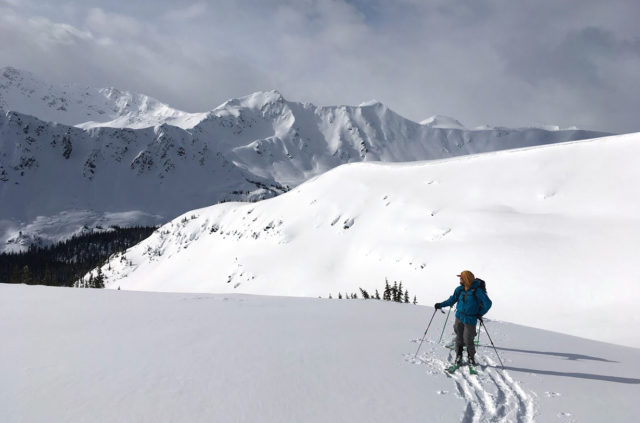
TLT6 fans will notice that the TLT Speedfit does not have a removable tongue. This makes the TLT Speedfit simpler in transitions than the old TLT6, though that comes with a compromise. I found that the Speedfit’s single, fixed tongue created a little more resistance on top of my foot while touring than the old TLT6 without its additional tongue. This makes sense, and also meant that longer backcountry days in the Speedfit tended to be slightly more uncomfortable on the top of my foot than in the TLT6, old Atomic Backland Carbon, and Salomon S/Lab X-Alp. Your mileage may vary (especially since part of this could be due to the fit of the Speedfit), but this is worth noting if you’re someone who’s become a fan of boots with removable tongues or super light boots with tons of range of motion.
Downhill Performance
The TLT Speedfit is a light boot, and like pretty much all boots that are this light (roughly <1300 grams for a size 26.5), it demands more careful, centered skiing than boots with stiffer flex patterns (and often heavier weights). And compared to similarly light boots with carbon cuffs or stiffer tongues, the TLT Speedfit requires even more centered, balanced skiing.
To me, the TLT Speedfit makes the most sense if you’re looking to use this boot for inbounds, fitness-oriented touring where conditions are often consistent. It could also be a viable (albeit, slightly heavy) training boot for ski-mountaineers looking to not use their race gear all the time.
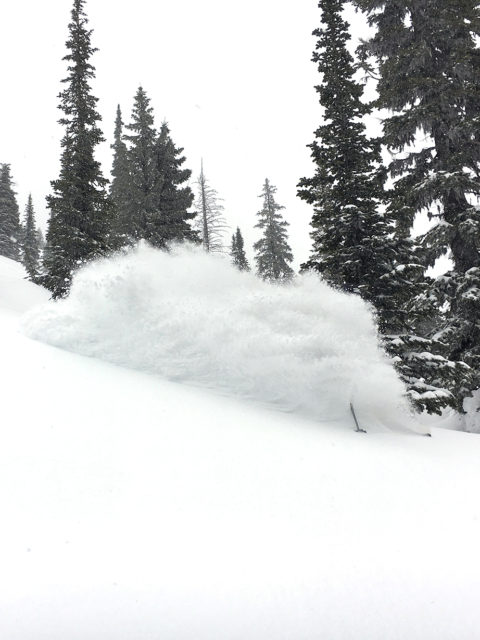
For skinning up and skiing down groomers, the TLT Speedfit works pretty well. But if the terrain or conditions get more complex (e.g., steep and / or variable), the Speedfit will struggle compared to even similarly light boots.
I found the lateral flex on the Speedfit to be just fine for slower speeds, but it tended to get a little overpowered with more aggressive skiing. The TLT Speedfit’s upper cuff felt less supportive than the carbon cuffs found on the TLT6 Performance or 18/19 Atomic Backland Carbon.
The Speedfit’s rearward support felt pretty good, unless of course you’re a bigger guy like me (~205 lbs) and end up leaning back so forcefully that you pop everything into walk mode while trying to land (e.g., like the pillow drop mentioned above).
In terms of forward flex, the TLT Speedfit is quite soft, and I found that it eventually bottoms out into a “brick wall” deep into its flex pattern. For my 205-lb self, there is very little resistance in the forward flex (I’d liken it to a “free fall” through the flex) and then, eventually, the boot just stops flexing. I do think that lighter folks will likely find more suspension and support in this boot, but still nothing close to heavier boots (e.g., Scarpa Maestrale, Atomic Hawx Ultra XTD, Tecnica Zero G, etc.).
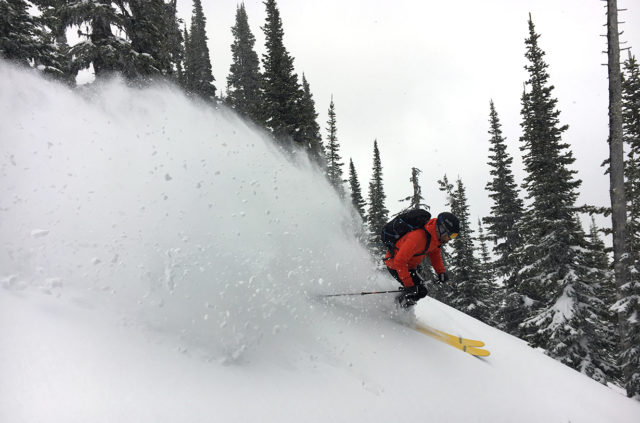
All of this means that the Speedfit isn’t the boot for you if you want to drive your boots and skis hard on the down. That also means that chop or weird conditions are pretty difficult to ski in the TLT Speedfit. Centered, balanced skiing on consistent groomers or pow is where it felt best — big backcountry days where you encounter varying conditions and more challenging lines are best left to boots with better skiing performance. On that note, here’s how the TLT Speedfit compares to a few other boots I’ve used:
Comparisons
In terms of skiing power and general stiffness, here’s a list of the lighter boots I’ve used, categorized from stiffest to softest. Since some of these boots can be skied with or without their optional tongues, I’ve noted how they flex in both configurations.
Salomon MTN Explore
Atomic Backland Carbon with tongue (15/16–18/19 version)
Dynafit TLT6 Performance with tongue
Salomon S/Lab X-Alp
Atomic Backland Carbon without tongue (15/16–18/19 version)
Dynafit TLT Speedfit
Dynafit TLT6 Performance without tongue
From a general downhill-skiing-performance perspective, the TLT Speedfit is the least favorable option in the above list. That said, the finicky multiple-tongue systems on boots like the TLT6 & Backland Carbon and complicated fitting (at least for me) on the S/Lab X-Alp make the TLT Speedfit one of the simplest boots to use. Of that group, the TLT Speedfit is the boot that I’ve reached for the least over the past year, at least for the touring that I tend to do.
Dynafit TLT Speedfit vs. Dynafit TLT Speedfit Pro
It’s worth noting that Dynafit recently released the TLT Speedfit Pro, which is somewhat similar to the TLT Speedfit but adds a carbon cuff and reportedly features a higher-volume last (stated 103 mm). There’s a chance that the “Pro” version of the Speedfit could offer enough support for off-piste touring, though Dynafit still markets the TLT Speedfit Pro for on-piste fitness laps. We’re hoping to review the TLT Speedfit Pro to see just how different it is vs. the standard TLT Speedfit.
Price
This is one area where the TLT Speedfit stands out, and in a good way. At an MSRP of $599, the TLT Speedfit is significantly less expensive than many of the stiffer, similarly light boots. And right now, you can find the TLT Speedfit on sale for well below its MSRP. That makes it a very appealing option for those who are looking to get some exercise at their local resort’s groomed terrain, and who want to do so without investing heavily into a stiffer touring boot.
Who’s It For?
I think the TLT Speedfit fits a niche exactly as Dynafit describes it: “developed specially for on-piste tours.” If you’re looking to do some fitness-oriented laps on groomed, predictable conditions, the Speedfit makes a lot of sense. Lighter skiers than I may find the TLT Speedfit adequate for broader applications, but there are better boots for that, even those that come in at similar or lighter weights vs. the Speedfit.
Bottom Line
In terms of price point, the Dynafit TLT Speedfit is one of the cheaper options out there for an uphill-oriented touring boot. If you try to ski it hard on bigger skis or get into the air, you’ll likely find it lacking in support. But if you’re truly planning to use it as Dynafit suggests, as an inbounds, fitness-touring / training boot and you prioritize low weight and range of motion over skiing performance, the TLT Speedfit definitely warrants consideration.

Thank you! Been staring at the sale prices on the Speedfit for awhile and wondering how well they would work B.C. Now i know. I LOVE my Dynafit “One” and “Mercury” and am always interested whenever Dynafit comes out with a new (less $$) boot. Thank you again.
but how well do they work for Ice climbing?
Thanks for the informative write-up David.
“It’s worth noting that Dynafit recently released the TLT Speedfit Pro, which is somewhat similar to the TLT Speedfit but adds a carbon cuff and reportedly features a higher-volume last (stated 103 mm).”
According to – https://skimo.co/dynafit-tlt8-tlt7-comparison –
“the Italian designers chose to use the old TLT6 molds while designing the Speedfit Pro.”
David – are you sure the Speedfit Pro will have a wider last than this Speedfit you have reviewed? I believe it is an important point because if the Speedfit Pro is comparable to the TLT6 then there is a huge market for this boot competing against the the Alien RS/ Atomic Backland Carbon Boot/ Fischer Travers CC.
Thanks again and have a good season.
In response to the question about the ice climbing, I’ve used them with crampons a lot the past year and they’ve preformed better than most AT Boots and way better than boots geared towards alpine style with less flex.
End of the day, they don’t work as well as my La Sportiva Nepals but I don’t have an issue with them. One thing to point out is the toe bail is NOT full as mentioned above. When using automatic crampons you will likely struggle to get them to lock over the toe. I eventually got them to work but after the first time reverted back to strap crampons. I’d strongly suggest getting very familiar with putting the crampons on your boots at home before trying to put them on while on a glacier.
Essendo in Grilamid possono essere adattati a chi ha la pianta mnolto larga: io ad es. ho il “callo del sarto”, una protuberanza al quinto metatarso e un bravo bootfitter me li ha dilatati di quasi un centimetro. Non si può fare con tutti gli scarponi
I would think if using them for ice climbing, lanier style crampons, or the semi auto type with the straps, or Y-shaped plastic toebox retainer plus snap on heel fixture would work best. You’d then avoid the problem of getting fully auto crampons where the steel toebail has to be just a perfect fit on the boots duckbill section